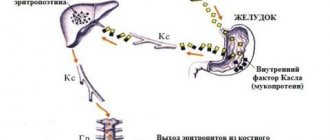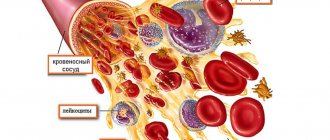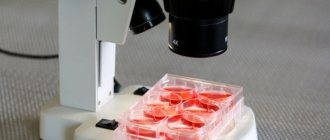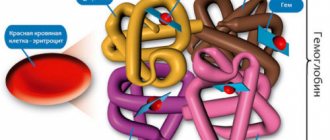What do changes in normal symptoms and consequences indicate?
Sometimes situations arise when a blood test shows elevated uric acid levels.
Crystallization and sedimentation of sodium salts occurs in organs - kidneys, eye tissues, stomach, liver. The tissue of the joints is especially affected, because, once in the joint, these crystals are perceived by the human immune system as
hostile substance. Tissues try to get rid of and displace foreign bodies, but to no avail, which ultimately leads to irreversible changes in the structure. A striking example is the disease gout, one of the causes of which is considered to be elevated titers of uric acid.
Female and male people over the age of 50 with changes in the norm of this substance experience the following symptoms:
- The appearance of painful sensations in the joints mainly at night.
- The inflammatory process affects 2 joints at the same time.
- The places of bright lesions are clearly outlined - toes, elbows, knees, shoulders.
- Touching and the slightest movements cause pain - from moderate to acute.
- Negative dynamics are noted in the form of swelling, redness of the skin, increased temperature of individual joint areas, and swollen veins are observed.
- If measures are not taken and treatment is not prescribed, the person will gradually lose the ability to fully move.
- The accumulation of urates formed in the genitourinary and excretory systems is accompanied by shooting pains in the groin area, lower back, and abdominal area.
- Active formation of tartar and, as a result, inflammation of the gum line.
- Urates that affect heart tissue can cause myocardial infarction and hypertension.
- In the general condition of the patient the following are noted:
- increased fatigue;
- insomnia.
If such symptoms are detected, immediate contact with a physician and fasting urine and blood tests are required. Exit from
The current situation is complex therapy and special dietary nutrition, agreed with a nutritionist.
Drugs that can lower uric acid levels include:
- Mannitol;
- Glucose;
- Clofibrate;
- Azathioprine and others.
Reduced indicators also negatively affect the patient’s health and, as in the first case, require immediate diagnosis and consultation with several specialists. Perfect helpers in stabilizing a reduced level are:
- A nicotinic acid;
- Aspirin;
- Theophylline;
- caffeine;
- diuretics;
- Ascorbic acid, etc.
The human body is a single system in which everything is interconnected. Any failure, even if insignificant at first glance, can cause enormous problems. Based on this, I would like to recommend to all readers to monitor their body, listen to it, and respond to the “first calls” given to it. Banal general blood and urine tests should be carried out at least once every six months. For those who have chronic diseases - at least once every 3 months.
Anticipating problems and responding in a timely manner is better than solving them in a neglected manner.
Preparing for analysis, what to do
No special preparation is required, but it is strongly recommended to follow the rules to obtain accurate data (during the day before the expected visit to the medical center):
- refusal of tea, coffee and juices, including freshly squeezed ones;
- refusal to use chewing gum;
- for two days you must not drink alcoholic beverages or consume products made with the addition of or based on alcoholic products;
- maintaining calm, mental and emotional state without influxes of negative emotions.
To donate blood, you need to prepare properly.
12 hours before, as indicated above, you need to eat your last meal. Therefore, you need to go to a medical facility in the morning.
In the morning, before leaving for the test, you should not smoke. A minimum of one hour must have passed since the previous cigarette smoked.
How to get tested for uric acid?
A blood test for uric acid is taken in the laboratory department in the morning after a 12-hour fast. You should avoid physical training on the eve of your trip to the study. Smoking is not allowed 3 hours before the venipuncture procedure.
For two days, drinking alcoholic beverages is excluded.
Why is it important to strictly follow the preparation rules? The doctor makes a conclusion about the patient’s health based on his general clinical picture, as well as data from laboratory and instrumental studies. Moreover, the doctor receives more than 70% of the information from laboratory test data. Based on the results obtained, the patient is diagnosed and the necessary treatment is prescribed.
Distortion of results due to improper preparation, storage and transportation of a biomaterial sample leads to an erroneous diagnosis.
To carry out laboratory diagnostics, a chemical method is used - photocolorimetry. The essence of the technique is to determine the level of the desired substance depending on its absorption of ultraviolet light radiation of various spectrums. The result of a laboratory test for the level of uric acid in the blood is given in the form of quantitative numerical values. The generally accepted unit of measurement is micromoles per liter.
What are the dangers of excess uric acid?
During the reaction of acid with water and sodium, poorly soluble compounds are formed - urates. They tend to precipitate when the temperature decreases and the environment becomes acidic. Their accumulation in joint tissues provokes the development of gouty arthritis. The “trigger” of this process is often local or general hypothermia. Urates are perceived by the immune system as foreign particles, and it tries to destroy them. But at the same time, the own joint tissues are damaged, resulting in the development of an inflammatory process with alternating phases of remission and exacerbation.
Sodium salts enter the kidney tubules, where over time urate stones form, which can obstruct the ureters and cause renal colic. Salt deposits can also form in the gastrointestinal tract and muscle tissue.
In the kidneys, uric acid is actively formed due to alcohol abuse, so binge drinking provokes exacerbations of gouty arthritis. This compound can also be synthesized in the liver during the metabolism of individual sugars.
A decrease in the pH of the body is observed in patients with diabetes, as well as in athletes (active physical exercise causes an increase in the level of lactic acid - lactic acidosis).
note
Hyperuricemia is often detected in girls who are overly addicted to restrictive diets.
Causes of increased uric acid in the blood
If uric acid is elevated, there may be various reasons. The salt contained in it and containing sodium is necessary for two functions:
- Thanks to it, the functioning of the human brain is stimulated. This occurs through the activation and enhancement of the action of hormones such as adrenaline and norepinephrine.
- It is a powerful antioxidant. That is, salt carries out antitumor work at the cellular level and prevents tissues from degenerating.
What to do if the level of uric acid in the blood increases? The level of urea in people's bloodstream is determined at the genetic level and can be inherited. Those people who have a higher concentration of this salt are particularly active, creative and enthusiastic.
How to determine the level of uric acid in the blood? If you compare the structure of urea, it will be similar to caffeine. The human body itself is interested in maintaining the amount of urea at the proper level. If it is exceeded, then the excess components are excreted partly by the kidneys and partly by feces. The level of uric acid in adults and children is different.
In childhood, in blood tests it is 120-300 µmol/l, for the female population the normal level is 160-320 µmol/l, and for men - 200-420 µmol/l.
What is the factor that increases uric acid above normal? When the upper limit is increased, the condition is called hyperuricemia. Medical statistics show that high urea levels are more common in the male population than in the female population. This condition can also be caused by a jump at the physiological level under conditions such as:
- heavy physical activity in athletes;
- a long-term starvation diet that girls go on in order to get rid of extra pounds;
- with excessive consumption of foods that contain a lot of protein (meat or eggs).
Uric acid in urine or blood can signal health problems. This usually happens if levels are elevated for a long time. An excess of salts can settle in the joints, as a result of which the cells of the immune system find them and identify them as a foreign object. Because of this, they make attempts to destroy them, at the same time changing the structure of the joints themselves. Hence the disease called gout.
But not only do salts penetrate into the joints, they also concentrate in the kidney tubules. Because of this, the formation of stones in the urinary system occurs in the body. In addition, uric acid salts tend to settle in other organs. For example, in the heart muscle or stomach, and even in eye tissue.
For what reason can uric acid increase in women? The concentration of this substance in a person’s blood can appear for several reasons. First of all this:
- slowing down kidney function aimed at eliminating it;
- active work of the liver, which synthesizes uric acid;
- a large number of microelements that enter the body along with foods and are synthesized into acid.
The functioning of the liver and kidneys is disrupted, which usually happens with chronic problems of the human body at the level of decompensation with the manifestation of renal-liver failure (chronic hepatitis, cirrhosis of the liver, chronic pyelonephritis, nephritis, diabetes mellitus).
Hyperurecemia in women can be caused by other factors. They can be determined by changes in metabolic processes in the body, which partially affect the liver and kidneys. This:
- excess body weight;
- decreased functioning of the parathyroid glands;
- decreased synthesis of B vitamins;
- leukemia;
- prolonged therapy with certain types of medications (aimed at eliminating tuberculosis, cancer, diuretics, aspirin);
- disturbance of the acid-base balance of the body towards acidosis (this happens, for example, in the presence of toxicosis in pregnant women).
Reference values and reasons for the decrease
It must be remembered that men normally have higher uric acid levels than women. The reference value limits are:
- 202.3 - 416.5 µmol/l (men);
- 142.8 - 339.2 µmol/l (women).
In women, the concentration of uric acid is lower, simply because women have fewer cells in their bodies than men, mainly due to the low volume of muscle mass. Therefore, if a woman accidentally just looks at the male norm, she may get the impression that uric acid in the blood is reduced, for example, if it is less than 200 µmol/l. You also need to remember about such simple mistakes.
How to treat urea in the blood
It is recommended to determine the cause of the problem. When the source of the disorder is eliminated, you can be sure that there will be no relapse.
To reduce the serum concentration of the substance, the following measures are taken:
- Prescription of drugs with diuretics, drugs containing neutralizing substances. These are Koltsikhin, Allopurinol and analogues.
- Review of diet and nutritional composition. Avoid canned and smoked foods, fried meats, and reduce your consumption of fried foods. These rules apply for the period of treatment. Lenten, vegetable dishes, salads should predominate, and alcohol should be avoided.
- The fluid level needs to increase above normal. You need to choose juices carefully - they will contain a minimum amount of preservatives, colorings and additives.
Drugs that help quickly normalize a person’s condition when the problem in question occurs:
- Colchicine;
- Sulfinpyrazone;
- Benzobromarone;
- Allopurinol.
What is uric acid
Uric acid was first isolated from bladder stones, and only after some time the level of laboratory equipment made it possible to detect it in human urine. The chemical structure of this substance was established later.
This substance is the result (end product) of the transformations that purines undergo inside the human body - organic chemical compounds that come with food and are of enormous importance for the processes of synthesis of ribonucleic acids (DNA and RNA). Considering that new proteins are constantly being formed in tissues, and this requires ribonucleic acids, one can understand how important the process of timely removal of uric acid is.
The main share of uric acid is formed in the liver, then with the flow of passing blood it enters the kidneys, from where it is excreted along with urine. Small amounts of this substance are constantly present in various tissues of the body.
Causes of hyperuricemia
Direct causes of increased uric acid concentrations include:
- high level of dietary protein intake (source of purines);
- decreased excretory activity of the kidneys;
- increased synthesis of the substance in the liver;
- pneumonia;
- rhabdomyolysis;
- polycythemia vera;
- hemolytic anemia;
- psoriasis.
note
Diseases that cause hepatic and renal dysfunction include pyelonephritis, nephrosis; hepatitis, cirrhosis and diabetes.
Indirect causes of hyperuricemia;
- leukemia;
- hypovitaminosis of group B (especially B12);
- metabolic disorders (overweight, obesity);
- hypofunction of the parathyroid glands;
- metabolic acidosis (including with gestosis in pregnant women);
- carbon monoxide, ammonia or lead poisoning;
- long-term use of certain pharmacological agents (diuretics, salicylates, antitumor and antituberculosis drugs);
Uricemia increases with smoking (which is caused by tissue hypoxia), as well as with insolation (cells need additional protection from free radicals formed under the influence of ultraviolet radiation).
In expectant mothers, the level of the substance decreases in the first and second trimesters, and increases in the third.
It is noted that hyperuricemia is typical for individuals with blood group 3 (B).
Symptoms of low uric acid levels
There are no specific symptoms of a decrease in the concentration of indicators, since this event in itself is a symptom. Specific manifestations depend on the reason that caused the change in the tests.
Thus, with toxicosis of the body of various etiologies, a person feels unwell, pain in the limbs, his temperature may rise, and a regular urge to vomit may form.
In cases of malnutrition, a decrease in uric acid concentration is almost always accompanied by various types of anemia.
In the presence of Fanconi syndrome, the patient exhibits a wide range of biochemical and clinical pathological symptoms in early childhood - from osteomalacia and bone deformation to delayed physical and intellectual development.
Wilson-Konovalov disease, in addition to a decrease in uric acid levels, is characterized by damage to the nervous system, the formation of Kayser-Fleischer rings, and a wide range of hemorrhagic problems
Table by age
| Age | Normal level in µmol/l | Description |
| Up to 10-12 years | 120-330 | The lowest normal level is observed before adolescence. Therefore, the normal level of the substance in the blood will be less than 120 µmol/l. In the absence of diseases, a blood test is done once a year during a routine medical examination. |
| Up to 50-60 years old | 150-350 | Then the indicators begin to increase, which is determined by the growth of estrogen in the female system; it begins to be produced in the period before and after childbirth. The reduced threshold for acceptable blood urea readings will be 150 µmol/l, and the highest – 350 µmol/l. These normal indicators are typical for women 55-60 years old. |
| Over 60 years old | 210-420 | After this age, the normal value increases to 210-420 µmol/l, which is determined by age-related changes, the appearance of chronic diseases, and inflammatory processes in the body. |
| Over 90 years old | 130-460 | At this age the indicator reaches its highest value. But it can also be quite low. |
What are the normal blood test results shown in the video:
Normal indicators depending on age
There are several options for interpreting the norm of an indicator, depending on the reference system and values used in a particular laboratory. In Russian medicine, concentration is most often measured in µm/l.
The level of uric acid is not a static value and fluctuates within fairly wide limits throughout the day. This parameter can be significantly influenced not only by physical activity, but also by emotional state, diet and other factors.
Typical values for children, regardless of gender:
- Up to 1 year – 80-150 µm/l;
- From 1 to 3 years – 90-180 µm/l;
- From 3 to 14 years – 120-320 µm/l.
Uric acid levels for men under 60 years of age range from 210 to 420 µm/l. At the same time, for the same age group in women – 150-350 µm/l, respectively.
In the older age group, taking into account irreversible physical changes in the body, the concentration of the blood element gradually increases. In this case, the norms, regardless of gender, can range from 200 to 450 µm/l.
Consequences of increased uric acid
First of all, it is noted that uric acid is a beneficial substance. It prevents the spread and accumulation of free radicals, a high concentration of which contributes to the development of cancer cells in the body. Thanks to the substance, the action of adrenaline is more active, which as a result allows you to stimulate increased functioning of the brain and nervous system.
On the other hand, an increase in the level of a substance indicates possible violations. Excessively low composition is considered a negative factor. Any deviations from the norm are a reason to conduct research and diagnostics.
An increase in the level of a substance indicates possible disorders
The consequences of an increase in uric acid in the serum are manifested by the following unpleasant symptoms:
- Joint problems. Salt accumulates in them, which can cause serious illness. At first, acute pain occurs in the joints, especially the knees.
- Formation of defects on the skin. Ulcers, spots, and other defects uncharacteristic of a healthy state are the result of an excess of the substance.
- There is less urine. A person does not experience pain when urinating, but its volume decreases.
- Knees and elbows become reddish. The intensity of pigmentation may change throughout the day.
- Heart rhythm disturbances.
- Constant changes in pressure, which manifests itself in dizziness, darkening of the eyes, problems with the vestibular apparatus.
Hyperuricemia is associated with joint diseases. Against the background of the disease, inflammatory processes, swelling, redness, and arthritis may occur.
Indications for the purpose of analysis
It was already mentioned above that the main indication is a suspicion of gout and an increase in uric acid. The second indication is to monitor the condition of a patient diagnosed with malignant tumors after initiation of treatment. Naturally, this does not mean surgical intervention, when the tumor is removed all at once, but the prescription of radiation and chemotherapy, when it breaks down in the body and produces a large amount of uric acid.
Finally, the third indication is monitoring the condition of a patient being treated for gout. A decrease in the concentration of uric acid is always beneficial, and its drop to normal values is an excellent result in the treatment of gout. But what to do if uric acid in the blood is low? For what reasons could this be? Before talking about diseases and pathological conditions, you need to know how to properly prepare for the study so that there is neither a false increase in uric acid, nor an equally false decrease in uric acid in the blood.
Uric acid levels are normal for men and women
Normally, the content of uric acid in the body is determined at the genetic level, that is, it is transmitted from parents. It is believed that individuals whose concentration is relatively high are characterized by greater activity.
Normal analysis numbers (in µmol/l):
- men – 200-420;
- women – 160-320;
- elderly people (after 65 years) – up to 500;
- newborn babies –140-340;
- young children – 120-300;
- children under 15 years old - 140-340.
On average, about 1 g of uric acid is constantly present in the body of a healthy adult, and one and a half times more is released every day! It is able to bind acidic radicals, providing cell protection from these toxic compounds. Thanks to antioxidant activity, malignant degeneration of cellular elements is prevented. Uric acid activates adrenaline and norepinephrine, which helps stimulate the activity of the central nervous system.
Consequences
One of the most common complications due to high levels of uric acid in the blood is gout. This is inflammation of the joints, or arthritis, which causes significant pain in the sufferer and can disable him or her from working.
Hyperuricemia increases the risk of developing gout because uric acid accumulates in the blood and causes microscopic crystals to form in the joint. These crystals can penetrate the synovial joint and cause pain when friction occurs in the joint during movement.
Gout on the leg











